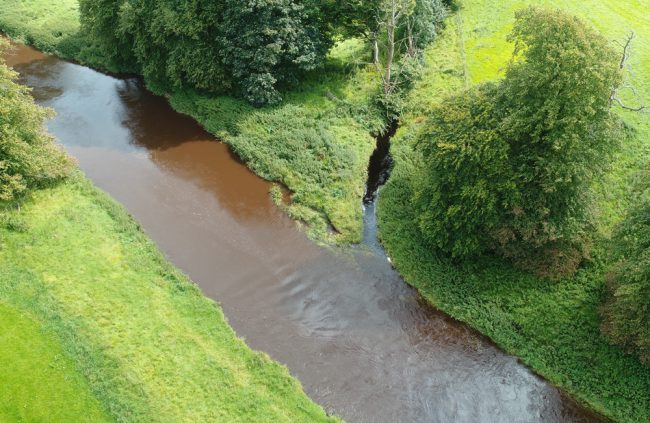We surveyed just one burn today and gave two volunteers an insight into semi quantitative electrofishing survey techniques and purposes. Both Jim and Heather have given the Trust their commitment to regularly turn out and help us and we in turn are assisting them to further their education in their chosen fields. We see this as part of our charitable committment to education. It is interesting to note that Struan and I both started out as volunteers with the Trust before becoming employees as did Helen and Emma Downie who both went on to develop their careers in related fields. This is a great way to learn and gain experience both for academic and practical reasons. We rarely ever decline volunteer assistance so long as they are willing to show commitment as we invest our time in their development and we have to be sure this is worthwhile.

Struan explaining survey design and requirements to our two regular volunteers Heather and Jim
Anyway, the Toddy Burn in the middle Girvan catchment was our place of survey today. We were in the area pruning some willow spilling we had installed previously (to encourage it to bush) when we noticed the burn was running clear and fishable. This burn was last surveyed by Brian Shaw and Struan back in 2011.
Today we fished a site near the top of the burn and found salmon and trout in good spawning habitat. 100m upstream there’s a long culvert and bedrock in between this and the survey site. This was probably the uppermost spawning opportunity for salmon. The culvert is 120m long and may be passable but the ground upstream rises steeply and it seems unlikely salmon would progress beyond this structure.

The culvert outfall… or is this long enough to be called a tunnel. Next time we visit, once of us will investigate it fully.

That’s an impressive culvert at 120m long. I expect this may be over well over 200 years old
We were please to see this wee burn looking in such nice condition today especially considering the disappointing colour and condition of the Girvan downstream.

The dark peaty water of the toddy Burn was clear and free of silt. Compare this to the Girvan which was very dirty after heavy rain overnight

